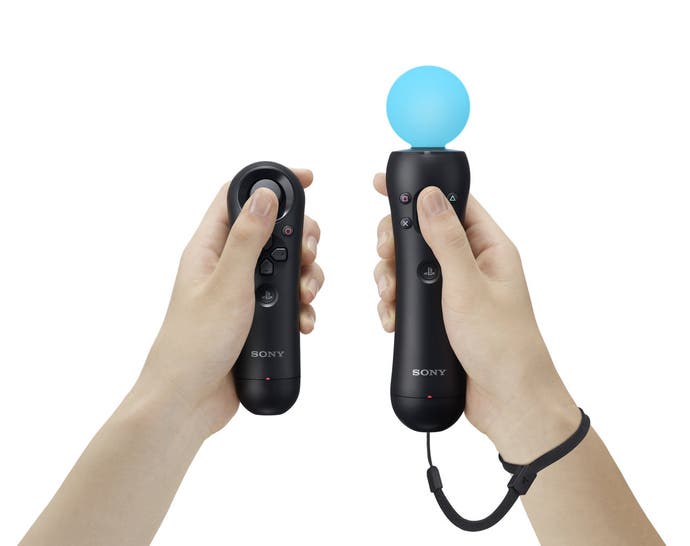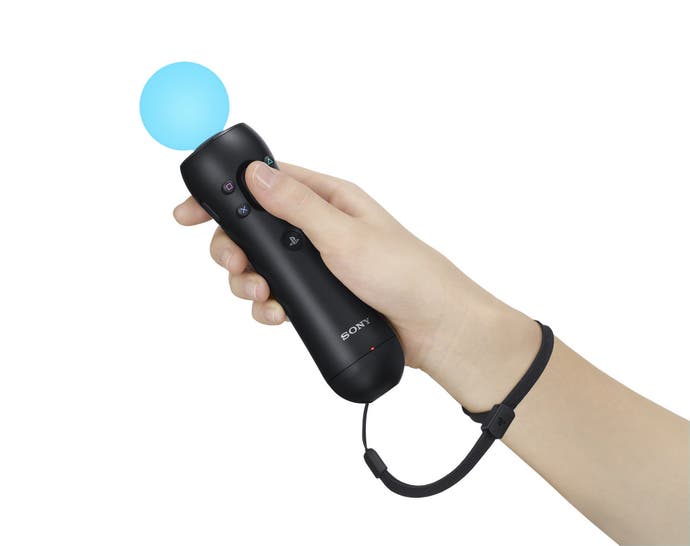The Case for PS Move
And how Sony could have owned motion control six years ago.
The biggest concerns we have for the prospects of PlayStation Move actually have nothing to do with the device's technical prowess: it's a highly elegant, solidly built device that offers a massive wealth of potential in terms of new gameplay experiences. The major concern is that the way Move has been marketed and bundled brings into question just how many of the truly innovative control concepts it is capable of will ever materialise in the form of full games.
The main problem it has to overcome is that it will always be an expansion or accessory to the console, meaning that if developers were to produce a Move-exclusive title using innovations along the lines of, say, Sony's own Chameleon demo, it can only ever appeal to a minority of the total installed base.
The only thing that could really change that is a strong strategy from Sony in making Move a new, de facto standard controller. You know, put it into every new PS3 box alongside the DualShock 3, mandate proper support where appropriate in all key titles (first- and third-party) and effectively make the upgrade essential - and cheap - for those who already own the console. It would be pricey for Sony, but the motion control market is obviously a prize worth challenging for.
There are also questions about the thinking behind the different Move configs, and how the lack of motion control for both hands out of the box is almost certain to limit the possibilities open to developers. How many are likely to develop innovative control systems that require the use of both hands when only a minority of a minority will have two wands available?
It's clear that much of the potential in the system resides in the ability to have a controller per hand - Richard Marks' demos prove that. Yet there isn't an official bundle pack offering two Moves when the full potential of the system, not to mention the basic concept of local multiplayer gaming, really demands it.


Nintendo has this sorted with the Wii remote and the nunchuk, both available out of the box with the system. Core games and two-hand motion control are yours by default. Two controllers should have been the standard in all bundles. Instead it's just one, immediately limiting the horizons for developers.
It's difficult to believe that Sony is truly committed to this extremely impressive controller when the platform holder has been on the fence about motion control for years now. How else can the decision to go for Sixaxis be explained when Richard Marks' team was developing and assessing far more advanced tech at least two years before the launch of PlayStation 3? Bearing in mind the immense research and development the platform holder had in its possession thanks to Marks' team, why did it take almost four years after the launch of Wii to get a competing system to market?
There's also a question of development commitment too. Sony happens to own outright an enviable portfolio of some of the world's most pre-eminent console developers - Naughty Dog, Sony Santa Monica, Polyphony Digital, Guerrilla Games and Evolution Studios amongst them - and yet none of them were deployed onto Move-exclusive titles. It stands to reason that there is no true "killer app" for the controller at launch, as Sony's best minds were not focused on it. Again, the contrast with Nintendo is telling. [Update: Sony's Sorcery is being created by Sony Santa Monica - not the God of War team as far as we know, but still an important developer. However, Sorcery is not due for release until Q2 2011.]
Perhaps an alternative would have been to go for Microsoft's approach, where Kinect has been set up as a parallel brand - almost like a platform launch - in its own right, complete with a library of bespoke titles and a substantial commitment from third party publishers, but again this has not happened.
From a technical and developmental point of view, PlayStation Move is very cool piece of kit. As a motion controller, its overall combination of precision, a fixed, low cost level of CPU and memory usage and the 60FPS camera feed makes it easily the most accurate, versatile and flexible interface available on console. There's little doubt that it can outperform the Wii remote and MotionPlus, and while the scope for dance and fitness titles may not be in the same league as Kinect, it can still compete in this space, and it has far fewer technical limitations than Microsoft's sensor.


There's also a sense that Move represents a vision of the future of control in console gaming - when games like Virtua Tennis 4 offer a combination of stereoscopic 3D vision combined with an ultra-precise, low-latency 3D controller, you can't help feel that Move offers the potential to test out the kinds of control schemes that developers will be targeting for the next generation of gaming.
Here and now, what we love most about Move is the raw potential it offers. The sheer scale and scope of the opportunity here to create fresh game concepts is hugely exciting. The only question remains whether the opportunity Move represents will end up being more of a missed opportunity due to the decisions that the platform holder has made.
Moving forward, Sony is on the record as saying that it is currently developing PlayStation 4, almost certain to be deeply integrated with stereoscopic 3D. While the DualShock will almost certainly never fade away, a 3D system needs a 3D controller out of the box. Let's hope that Sony get Richard Marks and his R&D team fully involved from day one.

